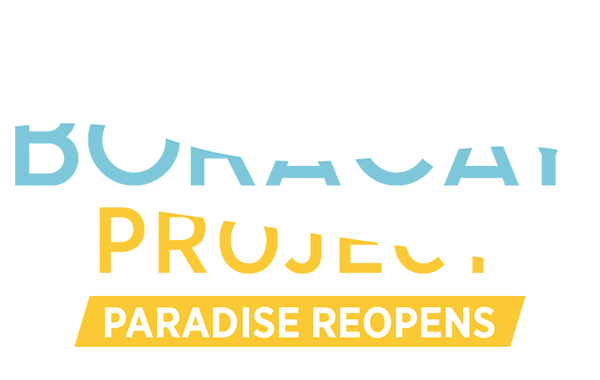














Turquoise waters slowly ripple on swathes of powdery white sand as beachgoers bask under the bright morning sun.
A jogger sprints through the 4-kilometer stretch of White Beach, while a man helps a toddler waddle through shallow pools of saltwater. Four Ati children mold sand into small castle masterpieces, while a couple of teenagers take selfies with gradient blue hues of the sky and the sea as their backdrop.
“This looked a lot more like the Boracay I knew while I was growing up,” says 59-year-old Delsa Justo, an Ati tribe leader who was born on this island.
Over decades, the quaint island in Western Visayas that used to be Delsa’s playground slowly morphed into a top Asian party paradise where some 40,000 tourists trooped to drink, dance or dive.
Foam parties left streaks of chemical fizz seeping into the ocean. Beer bottles were found nestled between corals. The white sand was laden with cigarette butts and plastic utensils. Wastewater from kitchen sinks and toilets were flushed into the sea.
“The parties were fun, but those [parties] and some hawkers were getting out of hand,” said Lee Rosaia, who owned a beachfront coffee shop since 1996.
“They were smoking and throwing cigarettes on the beach, they were kinda rude.”
Andrew Hoole, a British tourist who frequented Boracay, said: “It really was a cesspool. When it rained, it stunk.”
In April 2018, the government ordered the island closed for a 6-month rehabilitation after President Rodrigo Duterte lamented that its once pristine shores had turned into “cesspools.”
Food kiosks, massage and tattoo beds, and lounges on the beach were dismantled. Vendors who sold sunglasses or offered watersports activities were banned from the peddling their goods along the coast. The government “padlocked” establishments that failed to secure environment compliance certificates.
After 6 months, Boracay reopened its shores to outsiders in October but imposed a limit on the number of tourists and workers who can stay on the island.
Before the closure, the daily average number of tourists, workers, and residents on the island was about 70,000, a study commissioned by the Department of Environment and Natural Resources (DENR) showed.
The 10-square kilometer island can only carry 54,945 people at a time, it said.
Some 22,395 workers who used to rent apartments on the island have been asked to stay in mainland Malay, Aklan, a 10-minute boat ride from the island.
Desks that serve as pseudo immigration counters have been placed in the Caticlan Jetty Port — the gateway to the island — after the study found that swimming areas on the island can only carry as much as 10,623 people per day, and its shores can be occupied by a maximum of 8,592 people.
Each visitor now has to present booking vouchers to Department of Tourism officials in charge of verifying whether there was still space on the island. The desk officers also check if the tourist will be staying at a place that passed environment standards set by the government.
“It might be a hassle for some, but we feel safer. It’s also as if you’re all accounted for,” said 45-year-old Grace Arroza, who visited Boracay with 6 of her kin.
“Mas na-enjoy din namin ’yung scenery, hindi crowded.”
Boracay’s waters always glimmered on sunlit days, but little did beachgoers know that before the island was closed, it was churning out 17.5 million liters of wastewater into the sea every day.
Only half [of the wastewater] was being treated while the other half was discharged without treatment, a DENR study, published in September 2018, reads.
Of the 3,917 commercial establishments on the island, only 40 percent or 1,602 were connected to the central sewer, 25.7 percent or 1,006 others were managing their own septic tanks, while 426 others had both sewer connections and septic facilities.
Nearly 900 hotels, restaurants and other stores “had no idea what wastewater system" they were using, the report said.
Before the closure, the coliform level at White Beach was between 800 and 900 most probable number (mpn) while the count at Bulabog beach, where discharge pipes were located, reached some 100,000 mpn, the DENR said.
The standard water quality for swimming is 400 mpn.
During the 6-month closure, the government unearthed at least 36 illegal pipes that discharged sewage a foot beneath White Beach.
During Boracay's closure, illegal drainage connections were dismantled. Establishments were ordered to either connect to the central sewer system or build their own sewage treatment plant.
Coliform levels at White and Puka beaches dropped to 8 mpn, a standard given to liquids as clean as drinking water, Environment Underscretary Benny Antiporda told ABS-CBN News 2 days before the island was reopened to tourists.
“Nawala ’yung discharge, nawala ’yung nagswi-swimming, nakapagpahinga ’yung dagat at nagkaroon siya ng pagkakataon na umagos ’yung dumi naturally," Antiporda said.
The coliform level at Bulabog beach, however, remained between 20,000 and 30,000 mpn, or 5,000 percent higher than the ideal water quality for swimming, Environment Undersecretary Sherwin Rigor said.
“Meron pa tayong mga discharges due to construction pero substantial na ’yung decrease diyan because wala nang nagdidischarge along du’n sa beachfront,” Rigor said.
The government is investing P1.1 billion to build a “tamper-resistant” drainage system across the island in a bid to stop illegal connections.
Some residents were unaware that the drainage was only meant for stormwater, not wastewater, said Pocholo Paragas, chief operating officer of the Tourism Infrastructure and Enterprise Zone Authority (TIEZA), the agency in charge of the project.
“What we are trying to do is a more sealed connection, better than the old drainage made out of cement,” Paragas said.
“This one is thicker, hard to penetrate and more tamper-resistant to illegal connections.”
The first phase of the project — the construction of a pumping station, a holding tank, and a pipe that would discharge filtered rainwater 1 kilometer away from the sea — is expected to be completed by January 2019, Paragas said.
Two other outfall pipes, 8 kilometers of fortified drainage pipes, and 3 more pumping stations for flushing stormwater into the ocean will be completed by the end of next year, he added.
The lack of sewer pipes in the island remains a problem, said Darren Fernandez, chief regulator of the TIEZA regulatory office.
Boracay Island Water Co. (BIWC) treats some 11.2 million liters of wastewater per day at a sewage treatment plant that has a capacity of 11.5 million liters, Fernandez said.
In April, BIWC had a 22-kilometer sewer network on the island, but only 52 percent of establishments and 5 percent of households were connected to the system, BIWC general manager Joseph Michael Santos told ABS-CBN News.
Six months after, the number of establishments and households connected to the Ayala-managed water provider remained unchanged, Santos confirmed via text message.
"Massive DPWH (Department of Public Works and Highways) road rehabilitation restricts our sewer connections," Santos said.
Boracay Tubi Systems Inc. (BTSI), the other water concessionaire, provides water to 15 percent of the island but has yet to put up its own sewage system, Fernandez said.
BTSI receives 4 million liters of wastewater a day through siphoning services, but its treatment plant only has a capacity of 500,000 liters, Fernandez said.
BTSI official Jef Gelho said the water provider had 1-kilometer outfall pipes in Sitio Bulabog and Lugutan.
"Meron pa kami isa [outfall pipe] na gagawin sa Sitio Iligiligan," Gelho said without mentioning project specifics.
The government has yet to see how BTSI handles the sewage it collects from its customers as the company continues to snub a government order placing it under the supervision of TIEZA, Fernandez said.
“We tried. Nag-letter na ako, humihingi ako ng data because we are in the process of establishing rules, but it refuses to recognize TIEZA [as its regulator],” he said.
In 2010, the Department of Justice ruled that TIEZA should be the sole regulator of the 2 water concessionaires on the island.
Environment Secretary Roy Cimatu issued a similar order in September, but BTSI took the case before the Court of Appeals earlier this month, Fernandez said.
TIEZA, the Department of Tourism’s infrastructure arm, has a 20-percent stake in BIWC.
ABS-CBN News tried to reach the Lucio Tan-owned BTSI for comment, but has yet to receive a response as of this writing.
The government had required accommodations with more than 50 rooms to put up their own sewage treatment facilities.
Several resorts have complained against this policy, saying water providers should be responsible for sewage treatment.
"It is not within the law for small and even large enterprises to operate STPs [sewage treatment plants]," said Guenter Taus, a Boracay resort owner and president of the European Chamber of Commerce in the Philippines.
"It's very clearly specified that the concessionaire is appointed by government. They should be the ones to build STPs," Taus said, citing the Clean Water Act.
"We are not STP operators. We are hotel operators," he said.
The ongoing pipeworks also meant unfinished roads.
Tourists who disembarked from the Cagban Port in the southern part of the island were welcomed in a refurbished port that boasts of cooler airconditioning and new dock sheds.
Stepping out of the port to travel to hotels and resorts is another story, however.
The plan before the closure was simple: Expand the road’s width to 12 meters from 5 meters. Add a 1.2-meter bike lane, and a meter-wide sidewalk on both sides of the two-way street.
On reopening day, the reality was different: Some parts of the road were still under construction.
Pedestrians were hopping from one pile of debris to another to avoid sand bags and metal bars along the road. Some visitors cradled their luggage in their arms, as trollies could neither roll on wet cement nor mud.
Some opted to wear masks, a futile attempt to shield their faces from dust. Others shrugged off the filth.
Twenty-eight-year old Mary Grace Sakang and her two children were among those who had no choice but to brave the dirt and grime.
Everyday, she and her children have to endure a 20-minute tricycle ride and a few-meters walk from their home in Barangay Yapak to a school in neighboring Barangay Balabag.
Everyday, Mary Grace would have her pre-schooler son in tow in one hand, and use the other to carry her 5-month-old daughter.
“Mas mahirap ngayon. Dati kasi hindi pa maalikabok, maganda pa ‘yung hangin,” Sakang said.
“Tinatalukbungan ko na lang ng tuwalya para hindi masyadong maalikabukan,” she said.
Jessey Tamolin, a 49-year-old tricycle driver, used to make some P3,000 a day. His take-home pay from driving for 12 hours had been reduced to P1,000 since the government started working on the roads.
“Ang mahal na nga gasolina tapos traffic pa kasi maraming saradong kalye, maraming one-way,” Tamolin said.
“Sa dati kasya, sa ngayon bitin pa kasi college na ‘yung anak ko kaya medyo tipid-tipid muna kami ngayon,” he said.
“Dati maka-ulam kami ng karne, ngayon gulay-gulay lang muna dahil wala, mahina kita,” he said.
The government had a difficult time building roads due to bad weather, Environment Secretary Roy Cimatu said.
“It was unfortunate that the target of completing that in time for the opening ay hindi na-accomplish because of the 30-40 days na no work because of the weather,” he said.
“It’s not only in the concreting ang problematic diyan [sa weather] but pati sa pag-iinstall ng pipes. Mag-dig ka ng kanal diyan, mapupuno ng rain, hindi din sila makakatrabaho,” he said.
The P490-million road widening project was also stalled due to other repair works along the road, Public Works and Highways Secretary Mark Villar said.
“’Yung right of way, ike-claim namin. ‘Yung utilities, hihintayin pa namin ‘yung paglipat ng mga poste, paglipat ng water system,” Villar said.
“Minsan mabagal din yung water concessionaires sa paglipat ng piping,” he said.
The 4-kilometer road widening project is “already 80 percent complete” and will be finished by the “first week of December,” Villar said.
The “nearly completed” portion, however, is only 20 percent of Boracay’s 20-kilometer road network.
More excavations and road repairs in the island will be done in the “next few years,” Villar said.
“The whole 20 kilometers, ia-identify muna namin ano ang kailangan namin gawin kaagad so over the next few years, meron at meron yan,” he said.
“Konting tiis na lang po. Six months of course is the clean-up but ‘yung infrastructure, we will keep on doing it,” he said.
A strip of thoroughfare parallel to the Bulabog beach in the eastern side of the island was completed before the reopening.
The terracotta-tiled boulevard boasts of a clear view of the beach, a sidewalk dotted with palm trees, and wider two-way roads.
The government hopes to replicate this same development in the island’s city center.
When the island was shut to tourists, nearly all beachfront establishments closed shop, but not the quaint nipa-roofed café that sold the island’s famous calamansi muffins.
Seventy-seven-year-old Lee Rosaia was adamant in keeping Real Coffee open even if there were days they had no customers.
The coffee shop’s second floor was used as a makeshift yoga studio on certain days during the closure, Rosaia said.
“They used it for free. They would occasionally have a coffee or sometimes breakfast, [but] that was it,” she said.
“We just let them use it just so we could have some people here, give the staff something to do,” she said.
The shop’s staff worked shorter hours and only baked their signature muffins when an advanced order was placed, Rosaia said.
“I tried to stay open. There were days when we had 1 customer but it was okay. At least the staff could feed their family,” she said.
“Ocassionally we would make money to pay for the water bill but for the most part we would be taking from our savings,” she said.
“My staff are very good and loyal and we wanted to help them. We also didn't want to find new people and train them again when we open,” she said.
The 22-year-old café weathered the 6-month financial turbulence and welcomed customers anew on October 26.
“I have a feeling it would be back to what it was before. With a little bit of control, we can manage,” she said both referring to her café and to the island she called “paradise.”
Boracaynon entrepreneur Merly Tampos, who concocted the popular chori-burgers sold along the beachfront, was not as lucky.
Tampos’ 30-year old barbecue stand that used to earn as much as P20,000 a night from selling the grilled burgers and other meat skewers to beachgoers, had to close shop.
Tampos’ humble grilling kiosk by the beach was kicked out of the beachfront along with other peddlers and makeshift stalls after the government strictly imposed a 30-meter easement policy.
Under the island’s new beach rules, tables, lounges, umbrellas, pets, and other obstructions including peddlers like Tampos and her family are prohibited from being on the beach.
“Biruin mo, 6 months, wala kaming hanap-buhay,” Tampos said.
“’Yung pagkain namin, kasi may maliit na karinderia ‘yung anak ko, nagbibigay samin ng pagkain,” she said.
Tampos and her family tried to sell their grilled burgers at the town plaza or by the roadside during the closure, but she said there were simply not enough customers.
“May 2 araw na P260 lang ang kinita namin kasi walang tao, mga panday-panday lang dito [ang bumibili],” Tampos said.
“Sabi ko [sa pamilya ko], ‘Hinto lang muna tayo kasi sayang din ang pamamalengke namin,’” she said.
Tampos said she had used up all her savings.
Her family tried to offer their grilling services and food in private events in the island, but the income was still meager compared to what they earned when they were still selling by the beach.
“Hindi nga nabawi puhunan ko. Humiram ako ng P3,000, P2,700 lang kita namin,” Tampos said.
“Dalawang buwan na akong walang bayad sa kuryente. May disconnection [notice] na nga,” she said.
Her son Junrey tried to avail of the government’s cash-for-work program in the island, but eventually worked as a construction worker in Manila to make ends meet.
Under the government’s program, one member of a family may work as a beach cleaner or a gardener in the island. This job that pays P300 daily salary, however, is only good for one month.
“Nag-work kami sa cash for work [program] pero kulang sa aming pamilya,” Junrey said.
Junrey was only one of 36,000 workers affected by the closure.
Though the island made some P56 billion in tourism receipts in 2017 alone, only 8,957 were formal workers. The other 27,039 were either unregistered or belonged to the informal sector, a study commissioned by the government said.
Some were able to land jobs in neighboring provinces, while others, like Michael Dela Cruz, were not as fortunate.
Before the closure, Dela Cruz was a waiter in one of the hotels in Station 2.
The 27-year-old would start his day at 4 a.m. He would welcome guests, serve food, fix tables and restock banquet spreads before ending his shift at 2 in the afternoon.
He would spend his free time napping or playing mobile games in his quarters in the hotel where he worked.
He was not the breadwinner, but he would send money to his parents and 2 siblings in Iloilo to fund some home repairs, buy appliances or add food on the table.
For 3 years, he did the same routine religiously until April 25, the eve of the island’s closure.
“Umuwi muna ako sa amin, nagtambay lang, tapos nagtraining ako ng free driving sa TESDA (Technical Education and Skills Development Authority),” Dela Cruz said.
“Maghahanap sana ako sa Maynila kaso financial problem. Wala akong kilala doon at saka hindi ko alam pasikot-sikot dun dahil ‘di pa ko nakakapunta sa Maynila,” he said.
Dela Cruz had to rely on his father’s meager income as a car mechanic to survive the 6-month closure. He sometimes helped out in the repair shop to earn extra money for their family.
“Malungkot siya pero hindi ko na lang pinapakita sa kanila, sa pamilya ko,” he said.
“Nakikita ko sa kanila na nahirapan din sila [nung nawalan ng trabaho] kasi nangungutang sila. ‘Yun ‘yung nakakalungkot,” he said.
Philippine Chamber of Commerce Boracay President Elena Tioso Brugger said only 11 businesses out of the group’s 55 members were able to secure compliance permits during the island’s reopening day.
“They are trying their best to catch up. Wala namang deadline ang pagbibigay ng compliance,” she said.
Some entrepreneurs have been “innovating” to keep their businesses despite the island’s new policies, she said.
“’Yung iba, naglalagay ng second floor para makita pa rin ‘yung sunset, maka-serve pa rin ng drinks sa harap [ng beach],” she said.
Rose Enrique, who used to be a masseuse along the beach, was among those who had to be creative with her livelihood given the ban on peddlers on the beach.
From massaging, she shifted to braiding hairs for a living.
“Nagtransfer na ako sa hair braid kasi mas magaang ‘yung hair braid. One hour kasi yung massage, ‘yung hair braid, mabilis lang,” she said.
“Pag merong bisita, dadalhin namin sa gilid para hindi makita ng pulis. Doon kami sa gilid na hindi lalampas sa 25 + 5 [easement zone], doon gagawin ang hair braid,” she said.
Enrique asks for P100 for every head she braids, only a third of the cost of an hour-long massage.
She said her 6 children have been yearning to taste chicken again, because all they could afford to eat lately was dried fish.
“Wala kami magawa. Alangan namang iiyak ka, alangan namang haharasin mo ‘yung bisita. Eh ‘di uwi ka. Tiis ka. Bili ka na lang ng tuyo,” she said.
Businesses and workers in the island - once brimming with tourists – have no choice but to embrace the new Boracay, Tioso Brugger said.
“It’s a painful lesson, a sacrifice, but we have to bite the bullet,” she said.
Puka Beach, the white-sand strip on the island’s northern part, will remain development-free, Cimatu said.
The area exudes both a placid ambiance and a haunting atmosphere as several posh resorts have been ordered shut and abandoned.
The Seven Seas resort nestled in the greenery of the secluded beach has been left unfinished. Boracay’s infamous West Cove, which flattened some of island’s ridges to build viewing decks and cabins, has been abandoned.
Coliform level in Puka is at 8 MPN, way below the 400 MPN standard for swimming, Rigor said.
The government has yet to disclose its plans for the area deemed as the island’s biggest wetland.
New Year in Boracay is expected to be dark and less lively as fireworks can no longer be used in the island.
The government initially allowed the use of pyrotechnics until 9 p.m., but eventually imposed a total ban 2 days before the island’s reopening.
The lights and noises created by fireworks may disturb the bats and flying foxes nesting in the mountains in Barangay Yapak, the DENR said.
The government also trained “wildlife enforcement officers” to look after the endemic species in the island and police possible poaching and other illegal activities.






Before the island was closed, the government vowed to recover 9 inland bodies of water that were either occupied by resorts, informal settlers, or were used as the dumpsite of sewage.
The wetlands “serve as the kidney of the island” because these naturally filter polluted water before it flows out into the sea, Antiporda said.
After a half-year rehabilitation, only 4 of the 9 wetlands have been recovered.
Four wetlands have been cleared and will be developed into sustainable public spaces with the help of Energy Development Corp (EDC), LT Group, San Miguel Corp. and the Aboitiz Group, Antiporda said.
The EDC said it plans to turn one of Boracay’s lakes into a tree nursery with several platforms for bird watching.
“Visitors can explore the nature trails, commune with nature from the scenic lookout deck and delight in searching for local and migratory birds,” the EDC said in a statement.
The Aboitiz group commissioned the design service of landscape architect and environmental planner Paolo Alcazaren to revamp the lagoon in the heart of the island.
“Lalagyan namin ng promenade kung saan puwedeng umikot ang tao. Ang silbi nito ay maprotektahan ‘yung wetland at pagkakataon din na gawin parke yung gilid,” he said.
Three “aerators” - aesthetic and functional fountains - will also be installed in the central lagoon to help cleanse the pool.
“’Yung paghahalo ng hangin sa tubig, nagdidissolve ito ng oxygen sa loob ng tubig para makatulong sa breakdown ng dirt elements,” he said.
The group expects to complete the purposeful park next year.
Several groups criticized the government for granting private companies oversight powers over the island’s lakes and creeks.
“Bakit mga kumpaniya at hindi mga community ang binigyan natin ng responsibility para alagaan yan? Doon nga sa community nagumpisa na magkaroon ng informal settlers,” Antiporda said.
“Sila yung nakinabang dito at yung iba nagtayo pa ng mga dormitory, ginawa nilang hanap buhay ito,” he said.
Seventy percent of the island’s biggest wetland in Barangay Yapak is still occupied by the Seven Seas resort, Antiporda said.
The Crown Regency Boracay still stands on what is supposed to be a road-side wetland, while another body of water remains inside the gates of the Kingfisher resort, he said.
"We have yet to demolish these hotels because there are cases pending in court," he added.
Some 32 families from the Tumandok tribe are still living in a wetland, but the government is in the process of finding a relocation site for the indigenous tribe, Antiporda said.
The wetland near the port in Barangay Manoc-manoc remains to be “a big problem,” Antiporda said.
“Medyo marami ‘yung informal settlers natin dito na kailangan nating i-relocate pa,” he said.
One of them, Jimmy delos Santos, 73, was still living in his concrete home near a creek six months after the government first said they would be relocated.
Delos Santos’ family has been occupying a 487-square-meter lot in the wetland since the 50s. His grandfather and father paid taxes to the municipal government for occupying the land since he was a child, he said.
The aging fisherman also earns some income from renting some small apartments near his home.
He said he was willing to give these all up and start anew if the government will reimburse the taxes they've paid and give them a decent relocation site.
“Aalis kami dito, tratransfer kung saan, e ano itatayo namin doon kung wala naman kaming pera?” Delos Santos said.
The government has yet to set a target date on when it would completely recover the 5 other wetlands.
Boracay generates about 76 tons of garbage a day, Jan Michael Tayo, the former head of the island’s Solid Waste Management unit told ABS-CBN News before the closure.
But another government study, published during the closure, said the island was producing between 90 and 115 tons of garbage a day.
The hauling capacity of the island was only 30 tons per day, the study reads.
Tayo was replaced before the island’s reopening.
The office has yet to complete the construction of a P4-million transfer station where garbage would be placed before being shipped to a landfill in mainland Malay.
The project is just 35 to 40 percent complete, said Engr. Arnold Solano, the new head of the island’s Solid Waste Management office.
“’Pag hukay ng foundation, may mga basurang nahukay so nanghingi siya (contractor) ng change order, parang change of site para maayos ang foundation ng building,” Solano said.
The project also stalled for a few weeks after the contractor had a hard time looking for workers willing to stay on the island, he said.
“Kung hindi pa niya (contractor) matapos, ibibigay na namin sa iba,” he said.
The local government has also expanded the hauling capacity to 50 tons per day, he said.
The government prohibited smoking, drinking and eating on the beach to minimize trash on the island’s famous fine sand.
The DENR also deputized “pollution control officers” to warn or apprehend beach litterers.
Each establishment must have a deputized pollution control officer, Antiporda said.
Several companies donated trash bins for the island, while others continue to sponsor beach clean-up drives.
Cimatu earlier said it was “easy” to clean up the island, but that the locals' “attitude” towards waste disposal was the problem.
Some officials who were invited to the island’s dry-run event were seen leaving their trash along the beach just because they did not see a nearby bin, Cimatu said.
"We can easily transform, nalinisan natin ito, pero yung attitude talaga," he said
Duterte's promise to stop gambling in the island has been implemented.
All three casinos in the island have been suspended from operating, Tourism Secretary Berna Romulo-Puyat said.
The Boracay Inter-Agency Task Force also wrote Philippine Amusement and Gaming Corporation (PAGCOR) asking the country’s gaming regulator to “revoke the license” of casinos on the island, Puyat said.
“Since Boracay is where families go, hindi bagay na may casino,” she said.
The Task Force - composed of the DENR, Department of the Interior and Local Government (DILG) and Department of Tourism (DOT) – also asked the President to issue an executive order banning gambling in the island.
“We’ve submitted it to the Executive Secretary’s Office and also to the DOJ (Department of Justice) for review,” Puyat said.
“I spoke to the President about 2 days ago and he said he will sign it,” she said.
Macau casino giant Galaxy Entertainment was supposed to put up a 23-hectare “mega casino” in one of Boracay’s coves.
The PAGCOR has yet to issue a statement on the status of the project that was shelved after it drew flak earlier this year.
Boracay Foundation board member Connie Helgen earlier said the other water activities and the island’s renowned sunset should be enough reason for tourists to come to Boracay.
“Boracay island is for beach lovers. Boracay is a wholesome destination,” she said.
As of the last week of October, all water sports activities in the island had been suspended while marine biodiversity tests are being conducted.
Acluster of nipa roofs lies between the sea and paved roads on the southeast side of the island.
Inside the 2.6-hectare community were nearly 50 huts for Ati families, the original inhabitants of Boracay before it was overdeveloped in the 90s.
The Atis worked as hotel or restaurant employees, but also grew their own crops, fished, and crafted souvenirs and handicrafts to put food on their tables.
Before the island’s closure, Duterte said he would declare Boracay as a “land reform area” and distribute more lands to the Atis and Boracaynon farmers.
On November 8, Duterte is expected to fly to the island for the first time since the closure to distribute around 3 hectares of land to 48 members of the Ati tribe, agrarian reform officials said.
The good news, however, has yet to reach the Ati tribe.
“Yang sabi-sabi [na bibigyan kami ng lupa] kung matuloy yan, kung ang aso nga pag binigyan ng pagkain nagsasayaw-sayaw, happy. Kami pa kaya? E kailangan namin yan,” tribal chief leader Justo said.
Duterte said recipients of the land may “sell” the land to “big businesses” to gain “huge money.”
The Ati tribe, however, prefers to keep their land and never sell it, Justo said.
“Sa aming mga Ati, ang alam lang namin ibenta ay yung mga isda na nahuli namin, mga gulay na nakuha namin. Kung lupa na, hindi magagawa ng community,” she said.
The Ati are very simple people who do not need so much money, she said.
“Hindi na namin alam anong gagawin namin sa pera pag nabenta namin yan. Ang lupa, mamatay ka man o buhay, lupa pa rin,” she said.
"The tribe only asks the government to give us a piece of land that is clearly ours, that does not have other claimants who would sue us,” she said.
Justo said she looks forward to seeing more from her tribe receive their own land.
The Ati children deserve to experience the childhood I had: freely running up and down the mountains to play or look for food, enjoy views of the beach, and spend time on whichever part of the island, Justo said.
But the tribal chief said she is not in a hurry to secure more land for her people.
“Tayo ang binibigyan, mag-antay tayo,” she said, gazing beyond the turquoise waters and into the horizon.
“Salamat na lang at ang Ati ay matitiyaga,” she said.